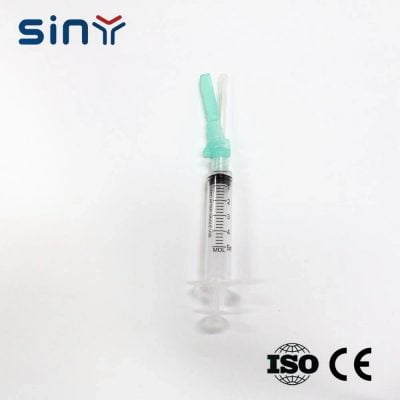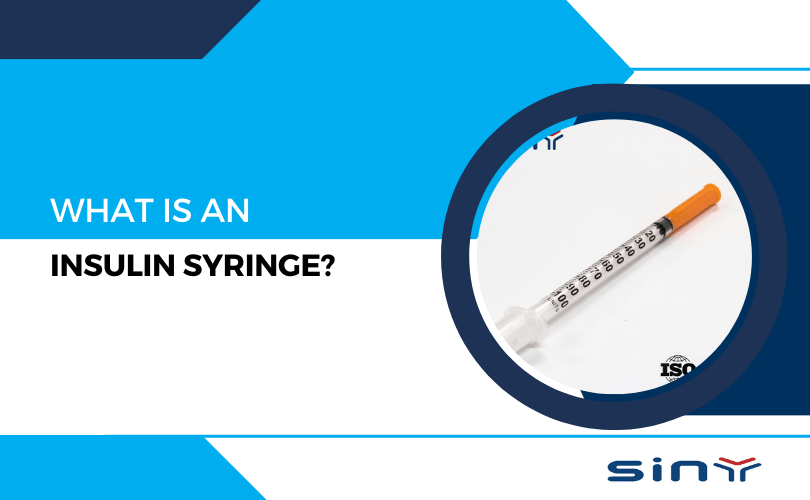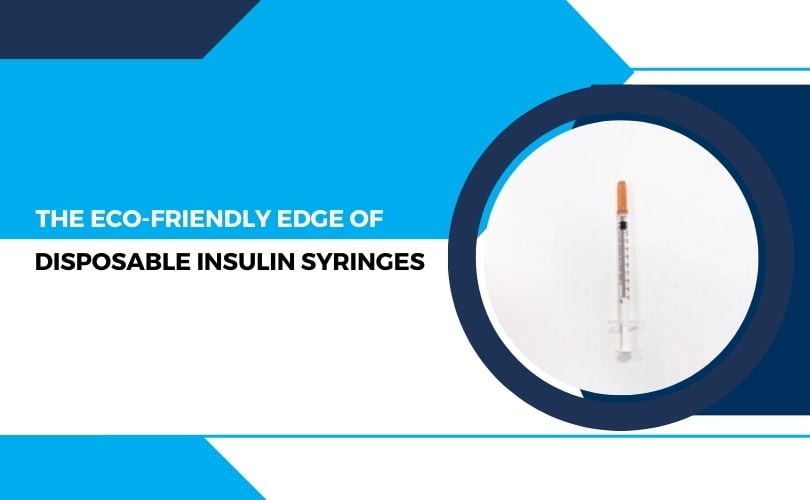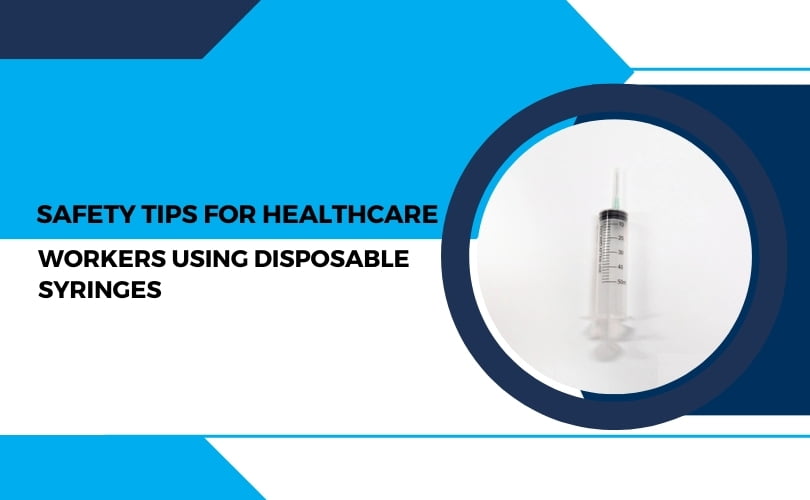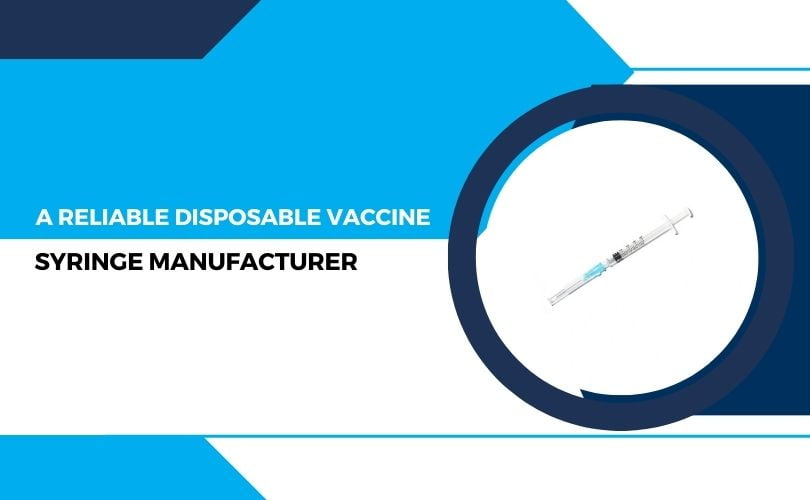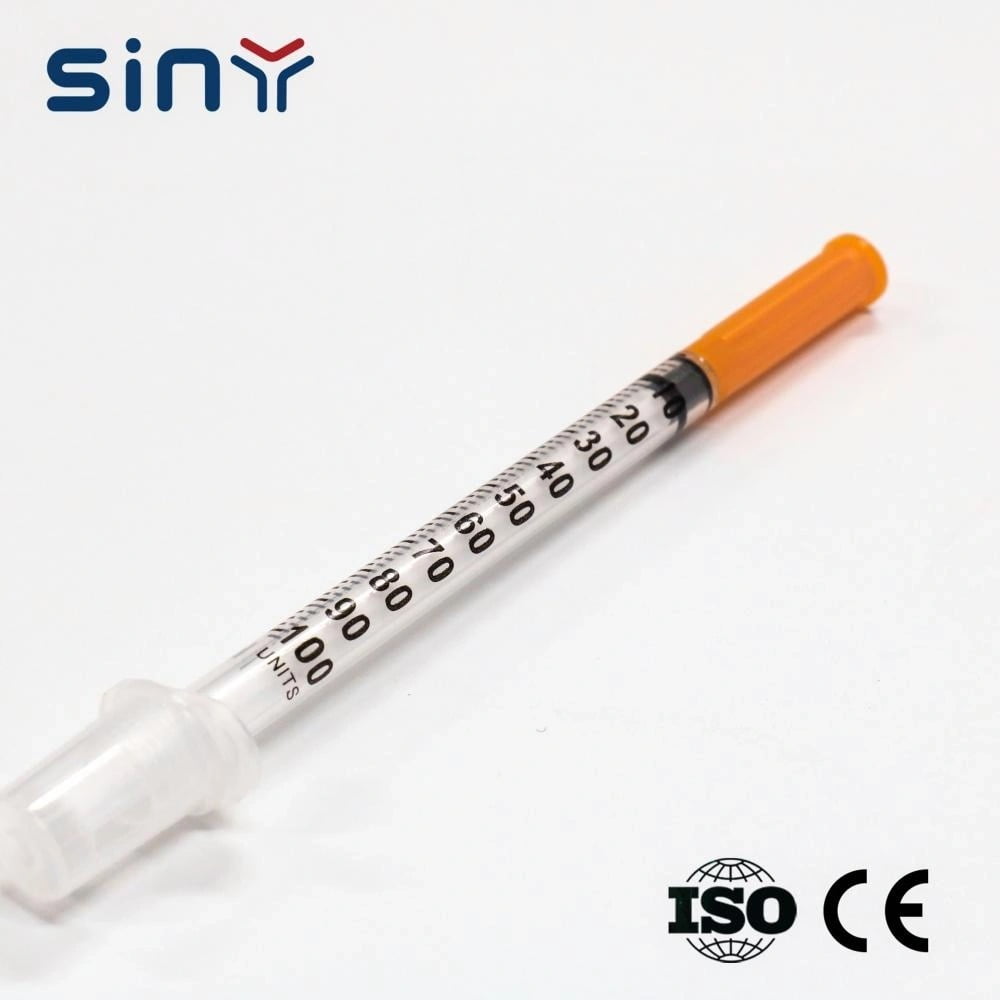Disposable luer lock syringes are medical devices widely used for administering or withdrawing fluids. They consist of several components that work together to ensure accuracy, safety, and ease of use. Understanding the anatomy of a disposable luer lock syringe is important for healthcare workers.
It is also important for patients. Therefore, this understanding can help prevent errors. Additionally, it can reduce the risk of contamination or injury.
This article will provide an overview of the components of a disposable luer lock syringe. It will explain their functions. It will also discuss the advantages of using this type of syringe.
Table of Contents
A. Purpose Of The Article
This article aims to help readers understand the anatomy of a disposable luer lock syringe. Specifically, by explaining the functions of each component. By doing so, readers can better understand how this type of syringe works and the benefits of using it for medical procedures. Understanding the benefits of using a luer lock syringe can lead to better outcomes for patients. In addition, explaining the functions of each component is important for ensuring that healthcare professionals use the syringe correctly and safely.
Components Of A Disposable Luer Lock Syringe
A. Barrel
1. Description: Manufacturers use transparent plastic to make the barrel of the syringe. This enables easy visualization of the contents. It also allows for measurement of the amount of fluid being administered. The barrel of the syringe holds the fluid and serves as the main body of the syringe. It also has graduation lines that indicate the volume of fluid being drawn or injected.
2. Materials Used: Manufacturers typically use transparent plastic materials like polypropylene or polycarbonate to make the barrel of the syringe. These materials are selected because they are compatible with various medical fluids and can be easily sterilized using various methods.
Moreover, transparent plastic enables easy visualization of the contents and measuring the amount of fluid administered. Furthermore, the plastic is lightweight and durable, making it easy to use and transport the syringe.
3. Graduation Lines: Manufacturers carefully calibrate graduation lines on a syringe’s barrel to ensure accuracy and consistency across different brands and sizes of syringes.
Healthcare professionals use these lines, marked in millilitres (ml) or cubic centimetres (cc), to measure and draw or inject precise amounts of fluid, ensuring accurate dosing of medication or fluids.
B. Plunger Of Disposable Luer Lock Syringe
1. Description: The plunger fits inside the barrel to draw in or push out fluids with back-and-forth movements. Manufacturers make it from a soft, rubber-like material such as synthetic rubber or silicone. The plunger creates an airtight seal with the barrel to prevent leakage. It is designed to precisely dose fluids.
2. Materials Used: Manufacturers typically make plungers out of synthetic rubber or silicone. This creates an airtight seal with the barrel of the syringe. The plunger prevents any leaks or contamination and allows for precise dosing of fluids. Healthcare professionals can easily manipulate the plunger, giving them precise control over the amount of fluid being drawn or injected.
C. Luer Lock Tip Of Disposable Luer Lock Syringe
1. Description: The luer lock tip is the threaded end of the syringe that attaches to the needle. It is typically made of rigid plastic or metal and is designed to securely hold the needle in place during medical procedures. The luer lock design helps to prevent the needle from accidentally detaching, reducing the risk of injury or exposure to potentially infectious fluids.
2. Luer lock tips are typically made of rigid plastic or metal, like stainless steel, chosen for their strength and durability, securely attaching the needle to the syringe during medical procedures. The luer lock design helps to prevent accidental detachment of the needle, reducing the risk of injury or exposure to potentially infectious fluids.
3. Purpose: The luer lock tip is designed to securely attach the needle to the syringe, preventing it from accidentally detaching during medical procedures. The luer lock design creates a secure, leak-proof connection between the needle and the syringe, reducing the risk of injury or exposure to potentially infectious fluids. The luer lock tip is an important safety feature in disposable luer lock syringes.
D. Needle Of Disposable Luer Lock Syringe
1. Description: The needle is the slender, pointed metal component of the syringe that pierces the skin or other tissue to inject or withdraw fluids. Manufacturers typically make it of stainless steel and offer it in different lengths and gauges to accommodate various medical procedures.
The needle is attached to the luer lock tip of the syringe and is used together with the plunger and barrel to deliver precise amounts of medication or fluids.
2. Materials Used: Manufacturers typically make needles of stainless steel due to their strength, durability, and resistance to corrosion. They make them available in different lengths and gauges to accommodate various medical procedures. The materials used in the needle are carefully chosen to ensure that it is sharp enough to easily pierce skin or tissue while also being safe and biocompatible for medical use.
3. Types Of Needles: Healthcare professionals choose the appropriate needle for medical procedures based on the required depth and amount of fluid to be injected or withdrawn. Needles are available in different lengths and gauges, with shorter, thinner needles used for superficial tissues and larger, thicker needles for deep injections or larger fluid volumes.
Depending on the specific medical procedure, they can also be straight or angled. The choice of needle type depends on the patient’s needs and the intended use.
III. Functions Of Each Component
A. Barrel Of Disposable Luer Lock Syringe
1. The syringe barrel, usually made of clear plastic, holds the fluid being administered, allowing healthcare providers to monitor the fluid level and ensure accurate administration.Furthermore, the plunger is critical in preventing fluid leakage during administration.
The plunger creates an airtight seal with the barrel, delivering fluid precisely without wastage. Healthcare providers control the fluid flow by pushing or pulling the plunger, drawing fluid into or out of the needle attached to the luer lock tip.
2. Allows For Easy Visualization Of Contents: The manufacturer typically uses clear plastic to make the syringe barrel so that healthcare providers can easily see the contents. This is crucial, especially in medical procedures requiring precise amounts of medication or fluids.
Furthermore, the clear plastic barrel enables healthcare providers to visually confirm the presence, colour, and clarity of the fluid being administered. As a result, they can ensure that the patient receives the correct medication or fluid, reducing the risk of medication errors or adverse reactions.
3. The syringe barrel typically bears graduations or lines, indicating the volume of fluid being administered.
Consequently, graduations allow healthcare providers to accurately measure and administer the precise amount of medication or fluid.
In this way, the healthcare provider can draw the appropriate amount of fluid into the syringe and administer it by pushing the plunger in a controlled manner. This ensures that the correct amount of fluid is delivered to the patient, which is crucial for safe and effective medical care.
B. Plunger
1. The plunger, a vital syringe component, moves the fluid in and out when pushed or pulled, through the needle attached to the luer lock tip.
Therefore, by carefully controlling the movement of the plunger, healthcare providers can administer precise amounts of medication or fluids for various medical procedures. Furthermore, the plunger creates an airtight seal with the barrel of the syringe, effectively preventing any fluid leakage during administration.
As a result, patients can rest assured that they receive the correct medication or fluid dosage without the risk of contamination or injury.
2. Materials Used Create An Airtight Seal With The Barrel: A pliable material such as rubber or synthetic elastomer typically makes the plunger, which creates an airtight seal with the inside of the barrel.
The plunger is designed to fit snugly inside the barrel and create a leak-free seal to ensure accurate delivery of medication or fluids. As a result, this seal prevents air from entering the barrel during administration, which could cause inaccurate measurements or fluid contamination.
C. Luer Lock Tip
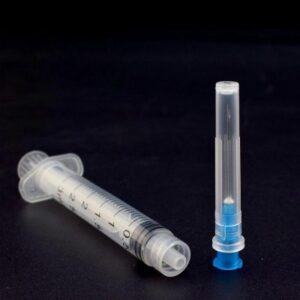
1. Connects The Syringe To Other Medical Devices: To ensure safe and effective delivery of medication or fluids, manufacturers attach a threaded fitting, called the Luer lock tip, to the end of the syringe barrel. The Luer lock tip ensures patient safety and effective medical treatment.
It provides a secure, leak-proof connection between the syringe and other medical devices, such as needles or extension tubing.
Furthermore, the threaded design of the Luer lock tip creates a tight seal that prevents fluid from leaking out during administration. This ensures that medication or fluid is delivered accurately without contamination or waste. Additionally, healthcare providers can have confidence in administering precise amounts of medication or fluids while minimizing the risk of infection or injury.
Alternatively:
It provides a secure, leak-proof connection between the syringe and other medical devices, such as needles or extension tubing.
In addition, the threaded design of the Luer lock tip creates a tight seal. And it prevents fluid from leaking out during administration. This ensures that medication or fluid is delivered accurately without contamination or waste. Moreover, healthcare providers can have confidence in administering precise amounts of medication or fluids while minimizing the risk of infection or injury.
2. Provides A Secure, Leak-Proof Connection: The Luer lock tip is vital for patient safety and effective treatment. It securely connects syringes to needles or tubing, preventing leaks. Its threaded design creates a tight seal, ensuring accurate delivery without contamination or waste.
D. Needle Of Disposable Luer Lock Syringe
1. Pierces The Skin Or Membrane To Deliver Or Withdraw Fluid: Manufacturers attach a thin, pointed metal rod, called a needle, to the Luer lock tip of the syringe. Healthcare providers insert the needle into the skin or a membrane. Creating a small hole that allows them to deliver or withdraw fluid from the body.
The size and gauge of the needle can vary depending on the type of procedure and the patient’s needs. The needle is a critical component of the syringe that allows healthcare providers to safely and effectively administer medications and fluids to patients.
2. Different Types Of Needles For Different Procedures: Manufacturers design needles for specific procedures and patient needs. For instance, healthcare providers commonly use hypodermic needles to inject medication or withdraw blood.
On the other hand, they use a spinal needle for procedures that involve the spinal cord or nerve roots. Additionally, the length and gauge of the needle can also vary based on the injection site and the patient’s anatomy. Therefore, it’s essential to use the right type of needle for each procedure to ensure safe and effective delivery of medication or fluid. Furthermore, using the wrong type of needle can cause complications such as pain, bleeding, infection, or even nerve damage.
IV. Advantages Of Using Disposable Luer Lock Syringes
Luer lock syringes, which are disposable, reduce cross-contamination and come pre-sterilized and pre-assembled for easy use. They are cost-effective by eliminating cleaning and sterilization needs.
Graduation lines allow accurate dosing, and luer lock tips work with various needles, creating an airtight seal and secure attachment to needles. Precise dosing reduces medication errors. These syringes are a safe, convenient, and cost-effective choice for medical procedures.
V. Conclusion Of Disposable Luer Lock Syringe
Healthcare providers use disposable luer lock syringes to administer medication, vaccines, and other fluids. They are safe, easy to use, and cost-effective medical devices. A disposable luer lock syringe consists of several components, such as the barrel, plunger, luer lock tip, and needle. Each component has a specific purpose and is made from specific materials.


